Boracay is a popular destination in the Philippines known for its beautiful beaches and lively atmosphere. However, there is some confusion surrounding whether Boracay is a city or a town. Let’s delve into this topic to uncover the truth about the status of Boracay and its geographical location.
Key Takeaways:
- Boracay is a barangay (village) in the municipality of Malay, not a separate city.
- It is located in the Western Visayas region of the Philippines.
- Boracay is approximately 315 kilometers (196 miles) south of Manila, the capital city of the Philippines.
- Despite not being a city, Boracay attracts millions of tourists each year.
- Efforts have been made to address environmental issues and promote sustainable tourism on the island.
The Geographical Location of Boracay
Boracay, situated in the Western Visayas region of the Philippines, is a captivating island known for its pristine beaches and breathtaking landscapes. Nestled in the province of Aklan, Boracay is approximately 315 kilometers (196 miles) south of Manila, the bustling capital city of the Philippines. The island itself is part of Malay municipality, functioning as a vibrant barangay (village) within its administrative framework.
Boracay’s geographical location in the heart of the Philippines makes it easily accessible for both local and international travelers. Its proximity to major transportation hubs allows visitors to conveniently reach this tropical paradise and indulge in its beauty.
With its exquisite natural wonders and rich cultural heritage, Boracay Island has become a coveted destination for those seeking an unforgettable experience in the Philippines.
The Charm and Appeal of Boracay
Despite the debate about its city status, Boracay island remains a captivating gem in the Philippines. Renowned for its magnificent white sandy beaches and crystal-clear turquoise waters, Boracay attracts millions of tourists every year.
One of the main draws of Boracay is its pristine beaches, which offer a blissful tropical escape. The soft powdery sand, gently caressed by the warm waters of the ocean, creates a haven for relaxation and rejuvenation. Visitors can bask in the sun, indulge in water activities like swimming and snorkeling, or simply take leisurely strolls along the shore.
The vibrant nightlife in Boracay is another highlight of the island. As the sun sets, the beach comes alive with energetic beach bars and clubs, pulsating with music and dancing. Whether you are looking for a laid-back beachfront hangout or a lively party scene, Boracay has something to offer for everyone.
The charm of Boracay lies not only in its natural beauty but also in its vibrant and diverse atmosphere.
As a popular tourist destination, Boracay caters to a wide range of interests. Beyond the beaches, visitors can explore the island’s lush landscapes, embark on thrilling water sports adventures, or indulge in delicious local cuisine. The island is also known for its warm and welcoming hospitality, with friendly locals ready to offer assistance and share insights into the island’s culture and traditions.
So whether you are seeking a tranquil beach getaway, an adventurous exploration, or a lively party experience, Boracay has it all. The island’s charm and appeal continue to captivate the hearts of travelers from around the world, making it a must-visit destination for those seeking a slice of paradise.
Experience the Beauty of Boracay Island
To truly understand the allure of Boracay, one must witness its breathtaking beauty firsthand. Explore the stunning beaches, take a dip in the clear azure waters, and immerse yourself in the vibrant atmosphere. Discover why Boracay has become a bucket-list destination for travelers seeking a tropical paradise.
Population and Tourism in Boracay
While Boracay may not be a city, it is home to a significant population due to its thriving tourism industry. The island attracts visitors from around the world, resulting in a fluctuating population based on the time of year. During peak tourist seasons, the number of visitors increases, contributing to the vibrancy and liveliness of Boracay.
The allure of Boracay lies in its stunning beaches, crystal-clear waters, and exciting nightlife, making it a top choice for travelers seeking a tropical getaway. The island’s popularity, however, has posed challenges related to overcrowding, environmental degradation, and inadequate infrastructure.
“Boracay’s popularity has led to concerns about overcrowding, environmental impacts, and the need for better infrastructure.” – Local Resident
Efforts have been made to address these issues and promote sustainable tourism practices on the island. The local government has implemented various measures to mitigate the effects of overcrowding, such as limiting the number of tourists and implementing stricter regulations on accommodations and businesses.
Boracay’s environmental degradation has also been a focal point for conservation initiatives. The rehabilitation efforts have focused on restoring and preserving the island’s natural beauty, including the rehabilitation of beaches and the implementation of proper waste management systems.
These efforts aim to protect the delicate ecosystem of Boracay while ensuring the long-term sustainability of the tourism industry. The goal is to strike a balance between preserving the island’s natural resources and providing a memorable experience for visitors.
Sustainable Tourism in Boracay
Boracay’s journey towards sustainable tourism involves the active involvement of residents, businesses, and tourists themselves. Responsible tourism practices, such as minimizing waste, conserving energy, and supporting local communities, are encouraged to ensure the island’s long-term viability as a premier destination.
By promoting sustainable tourism, Boracay aims to preserve its unique charm and protect its natural resources for future generations to enjoy. Visitors are encouraged to respect the island’s environment, follow regulations, and support local initiatives that contribute to the sustainable development of Boracay.
The Transformation and Rehabilitation of Boracay
In 2018, Boracay underwent a significant transformation and rehabilitation process to address the environmental issues and overcrowding that had plagued the island. The Philippine government, led by President Rodrigo Duterte, declared Boracay a “cesspool” and implemented a six-month closure of the island.
During this closure, efforts were made to improve the sewage and waste management systems, demolish illegal structures, and regulate tourism activities. The focus was on restoring the natural beauty of Boracay and ensuring sustainable development.
“We cannot compromise the environment for the sake of making money. Boracay must be protected and preserved for future generations,” said President Duterte.
The rehabilitation efforts included:
- Upgrading the sewage and waste management systems to ensure proper disposal and treatment of waste.
- Demolishing illegal structures that encroached on protected areas and violated environmental regulations.
- Implementing strict regulations on tourism activities to prevent overcrowding and minimize the impact on the environment.
- Enhancing the monitoring and enforcement of environmental laws to preserve the natural resources of the island.
The goal of these efforts was to create a more sustainable and environmentally friendly destination. The government recognized the importance of balancing tourism with the preservation of Boracay’s unique ecosystem.
The rehabilitation of Boracay has not only improved the environmental conditions on the island but also created opportunities for local communities. New job opportunities in sustainable tourism and environmental management have emerged, contributing to the economic growth of the region.
Looking ahead, the Philippine government is committed to the long-term preservation and sustainable development of Boracay. Strict regulations and ongoing monitoring will ensure that the rehabilitation efforts are sustained, and the island’s natural beauty is protected.
| Rehabilitation Efforts | Benefits |
|---|---|
| Upgrading sewage and waste management systems | Improved sanitation and water quality |
| Demolishing illegal structures | Preservation of protected areas and coastline |
| Regulating tourism activities | Reduced overcrowding and environmental impact |
| Enhancing monitoring and enforcement | Preservation of natural resources and ecosystem |
The Environmental Impact of Boracay Rehabilitation
The rehabilitation of Boracay has had a positive impact on the environment. The improved waste management systems and stricter regulations on tourism activities have significantly reduced pollution and the degradation of natural resources. The restoration of the island’s ecosystem ensures its long-term sustainability.
However, challenges still remain in maintaining this delicate balance between tourism and environmental preservation. Continued efforts and commitment from both the government and visitors are essential to ensure the success of Boracay’s rehabilitation and the protection of its natural beauty for generations to come.
Accessing Boracay
When planning your trip to Boracay, it’s essential to understand the transportation options available to reach this stunning island destination. Whether you’re flying from Manila or another location, the journey involves a combination of air, land, and sea travel.
To reach Boracay, you can choose to fly to either Kalibo Airport or Caticlan Airport, depending on the airline and flight availability. From there, you’ll need to proceed to the port to catch a ferry or boat that will take you to Boracay Island.
Several transportation services are available to help you navigate the journey smoothly. Private transfers can provide a convenient and hassle-free option, ensuring personalized service from airport pickup to drop-off at the port. Alternatively, organized services such as buses and vans are also available for a more budget-friendly approach.
Planning your transportation in advance is crucial to ensure a stress-free and enjoyable trip to Boracay. Consider factors such as airline schedules, airport transfers, and ferry departure times. By organizing your journey strategically, you’ll be able to make the most of your time on this beautiful island.
The image showcases the vibrant transportation options available to reach Boracay.
The Challenges of Getting to Boracay
Traveling to Boracay can be an exciting adventure, but it’s important to be aware of the logistical challenges that may arise along the way. From transportation options to navigating through crowded areas, here are some of the common issues that travelers face when getting to Boracay.
1. Boracay Transportation: Finding the Right Option
Upon arrival at either Kalibo Airport or Caticlan Airport, visitors need to make their way to Boracay Island. While there are several transportation options available, including buses, vans, and boats, it’s essential to choose a reputable provider and ensure a smooth journey. It’s advisable to book in advance and have a clear understanding of the available services and their schedules.
2. Crowded Buses and Terminals: Patience is Key
During peak tourist seasons, buses and vans that transport visitors to the ferry ports can become crowded. Be prepared for long waits and ensure you have a comfortable travel experience by bringing essential items such as water, snacks, and entertainment. It’s also important to exercise caution and keep an eye on your belongings in crowded terminals and on transportation.
3. Aggressive Touts: Beware of Scams
While walking through the ferry terminals, it’s not uncommon to encounter aggressive touts who may offer dubious deals or services. Remain vigilant and avoid engaging with them. Stick to reputable transportation providers and authorized personnel to ensure your safety and avoid falling victim to scams.
4. Disorganized Processes at Ferry Terminals: Expect Some Hiccups
Ferry terminals can experience occasional disorganization, especially during peak periods. Expect longer wait times, follow instructions from staff members, and be patient as you may encounter delays. Keep important travel documents easily accessible and stay updated on any changes or announcements regarding ferry schedules.
5. Choosing Reputable Transportation Providers: Minimizing Inconveniences
To minimize any inconveniences during your journey to Boracay, it’s crucial to choose reputable transportation providers. Research reviews, seek recommendations from fellow travelers or travel forums, and opt for companies with a proven track record of reliability and customer satisfaction. By doing so, you can ensure a smoother and more enjoyable travel experience.
The Impact of Tourism on Boracay
The rapid growth in tourism on Boracay has had both positive and negative impacts on the island. While tourism has brought economic opportunities and development, it has also resulted in environmental degradation, traffic congestion, and waste management issues.
With the increase in visitors, the infrastructure of the island has struggled to keep up with the demands, leading to strain on resources and public services. The surge in tourism has put a strain on the environmental assets that make Boracay so attractive to visitors.
The uncontrolled influx of tourists has taken a toll on the fragile ecosystem of Boracay. The unregulated development and improper waste management practices have led to environmental degradation and the destruction of marine habitats. Immediate action was required to address these issues and preserve the natural beauty of the island.
In response to these challenges, the government has implemented rehabilitation efforts and put in place regulations to curb the negative impact of tourism. The closure of the island in 2018 for rehabilitation was a significant step towards sustainable tourism practices. The closure allowed for the necessary repairs and improvements to the island’s infrastructure and environment.
The rehabilitation efforts aimed to strike a balance between catering to the needs of tourists and preserving the natural resources of Boracay. This included the enforcement of proper waste management systems, the demolition of illegal structures, and the implementation of sustainable tourism practices. The government has taken steps to limit the number of daily visitors to control overcrowding and protect the island’s fragile ecosystem.
The Environmental Challenges Faced by Boracay
The environmental challenges faced by Boracay are multi-faceted. The increase in tourism has led to excessive waste generation, putting a strain on waste management systems. As a result, improper disposal of waste has become prevalent, leading to pollution of the island’s beaches and waters.
The degradation of coral reefs, marine biodiversity loss, and the impact on the local flora and fauna are also pressing environmental concerns. The unregulated development and construction of infrastructure without proper environmental assessments have further exacerbated these issues.
The Path to Sustainable Tourism
The government’s efforts to rehabilitate Boracay and promote sustainable tourism practices have yielded positive results. The establishment of a carrying capacity for visitors, the enforcement of environmental regulations, and community involvement in conservation efforts have contributed to the restoration and preservation of Boracay’s natural beauty.
By focusing on sustainable tourism, Boracay aims to ensure that it remains an attractive destination for years to come. The island continues to work towards minimizing its environmental footprint and promoting responsible tourism practices that benefit both the local community and visitors.
“It is crucial that we strike a balance between tourism development and environmental preservation to ensure the long-term viability of Boracay as a world-class destination.” – Local Environmental Officer
| Positive Impacts of Tourism | Negative Impacts of Tourism |
|---|---|
|
|
The Transformation of Boracay’s Culture
The influx of tourists has had a profound effect on the local culture in Boracay. As the island has become a popular tourist destination, there has been a shift in focus towards meeting the needs and preferences of visitors. While this has undoubtedly brought economic benefits and opportunities for locals, there are concerns that the island has lost some of its authenticity as businesses and attractions cater primarily to the tourist market.
One aspect of this transformation is the presence of international restaurant chains in Boracay. While they offer familiar options for visitors seeking comfort and convenience, some argue that it takes away from the opportunity to experience Filipino cuisine and its rich flavors. However, it is important to note that alongside these international options, there are still many local eateries where visitors can enjoy traditional Filipino dishes.
Another concern raised by travelers is the lack of authentic Filipino cultural experiences in Boracay. With the island’s focus on tourism, some feel that the true essence of Filipino culture has been overshadowed by the need to cater to tourists. It is important to recognize that cultural experiences do exist on the island, such as traditional music and dance performances, as well as opportunities to interact with the local community.
While there are valid concerns about the transformation of Boracay’s culture, it is essential to strike a balance between preserving the authenticity of the local culture and meeting the demands of tourism. Efforts can be made to highlight Filipino traditions and incorporate them into the tourism experience, ensuring that visitors have the opportunity to immerse themselves in the local culture and create meaningful connections with the community.
Image: 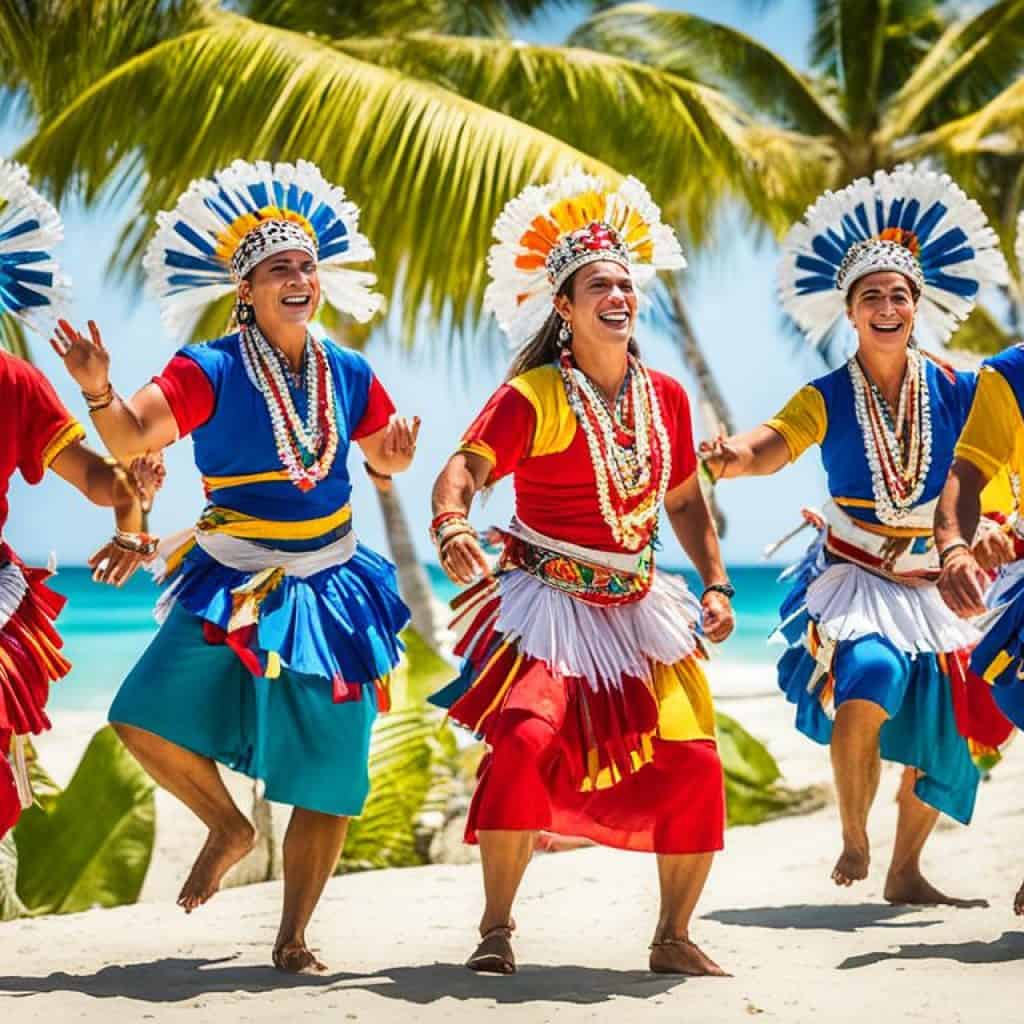
| Concern | Solution |
|---|---|
| Loss of authenticity | Encourage the preservation and celebration of Filipino traditions in tandem with tourism development. |
| Presence of international restaurant chains | Promote and support local eateries that offer authentic Filipino cuisine. |
| Lack of cultural experiences | Showcase and facilitate opportunities for visitors to engage with Filipino culture through music, dance, and community interactions. |
Challenges of Sustainable Development in Boracay
Achieving sustainable development in Boracay is a complex and ongoing challenge. As one of the most popular tourist destinations in the Philippines, balancing the demands of tourism with the preservation of the island’s natural resources and cultural heritage is crucial for its long-term viability. Effective planning and strict regulation are essential to ensure that Boracay’s sustainable tourism efforts are successful.
Preserving Natural Resources
One of the key challenges in sustainable development is the preservation of Boracay’s natural resources. This includes protecting the island’s pristine beaches, coral reefs, and diverse ecosystems. Efforts to minimize pollution, implement proper waste management systems, and discourage destructive practices such as overfishing are vital to maintain the ecological balance of the island.
Managing Infrastructure
The rapid growth in tourism has put immense pressure on the infrastructure of Boracay. To support sustainable tourism, there is a need for continuous improvements in infrastructure. This includes the development of adequate transportation networks, efficient waste management facilities, and reliable utilities. Proper infrastructure planning can help reduce congestion, minimize the environmental impact, and enhance the overall visitor experience.
Fostering Responsible Tourism
Encouraging responsible tourism practices is another significant challenge in Boracay’s sustainable development. This involves educating both tourists and local communities about the importance of minimizing their impact on the environment and respecting the local culture. By promoting sustainable activities, such as eco-friendly tours, and supporting local businesses that prioritize environmental and social responsibility, Boracay can create a positive and sustainable tourism ecosystem.
“The future of Boracay’s sustainable development relies on collaborative efforts between the government, local communities, and tourists. It requires a shared commitment to preserving the island’s natural beauty and cultural heritage.”
Enhancing Stakeholder Engagement
Effective stakeholder engagement is essential for successful sustainable development in Boracay. This includes involving local communities, businesses, and government agencies in decision-making processes and ensuring their active participation in the implementation of sustainable initiatives. Sustainable development should be a collective effort, with a focus on empowering local stakeholders to take ownership of preserving their island.
Promoting Ecotourism
Developing and promoting ecotourism initiatives can play a vital role in Boracay’s sustainable development. By highlighting the island’s natural beauty, unique biodiversity, and cultural heritage, ecotourism offers a more authentic and responsible way of experiencing Boracay. This can contribute to both the conservation of natural resources and the economic well-being of local communities.
| Indicator | Status |
|---|---|
| Waste management | Improving, but further efforts needed |
| Renewable energy usage | Increasing, with ongoing projects |
| Conservation of marine ecosystems | Efforts underway, but challenges persist |
| Community involvement | Growing, but more engagement required |
By addressing these challenges and making sustainable development a priority, Boracay can continue to thrive as a world-class tourist destination while preserving its unique natural beauty for future generations to enjoy.
Rehabilitation Efforts and Future Plans
The closure of Boracay in 2018 marked a significant turning point for the island, paving the way for extensive rehabilitation efforts to take place. The government recognized the need to address the environmental issues and overcrowding that had threatened the natural beauty and sustainability of Boracay. As a result, a comprehensive plan was put in motion, focusing on demolishing illegal structures, upgrading infrastructure, and restoring the island’s natural environment.
One of the key objectives of Boracay’s long-term plan is to promote sustainable tourism and adopt eco-friendly practices. Recognizing the importance of preserving the island’s pristine beaches and marine ecosystems, measures have been implemented to ensure responsible and low-impact tourism. These include stricter regulations on construction, waste management systems, and the promotion of sustainable transportation options.
The ongoing rehabilitation efforts continue to shape the future of Boracay as a desirable destination. The government’s commitment to preserving the beauty of the island and prioritizing sustainable development bodes well for both tourists and local communities. With the implementation of the long-term plan, Boracay aims to strike a balance between providing excellent visitor experiences and conserving its natural resources for future generations.
“Our goal is to rehabilitate Boracay into a world-class and sustainable tourism destination.” – President Rodrigo Duterte
As part of the rehabilitation plan, Boracay has also seen improvements in accessibility and transportation infrastructure. This includes enhancements to the airport, port facilities, and road networks to accommodate the growing number of visitors without compromising the environment.
The image below showcases the stunning transformation that Boracay has undergone since its closure, highlighting the efforts to restore and revitalize its natural beauty.
The commitment to rehabilitation and sustainable development in Boracay continues to draw attention and support from tourists and environmental advocates alike. By creating a balance between tourism and preservation, Boracay is on its way to becoming a model destination that showcases the harmony between nature and development.
| Rehabilitation Efforts | Future Plans |
|---|---|
| Demolition of illegal structures | Promotion of sustainable tourism |
| Upgrading infrastructure | Strict regulations on construction |
| Restoration of the natural environment | Improved waste management systems |
| Promotion of eco-friendly practices |
The table above highlights some of the key rehabilitation efforts that have taken place on Boracay, as well as the future plans aimed at ensuring the sustainability of the island’s tourism industry.
Exploring Alternative Destinations in the Philippines
While Boracay has its appeal, there are many other beautiful destinations in the Philippines that offer a different experience. Travelers seeking a more authentic and less crowded vacation may consider exploring alternative Filipino islands like Bohol and Palawan. These islands are renowned for their natural beauty, unique attractions, and rich cultural heritage.
Bohol
Bohol is an enchanting island in the Central Visayas region of the Philippines. It boasts stunning landscapes, including the iconic Chocolate Hills, which are a series of cone-shaped hills covered in vibrant green grass that turns brown during the dry season, resembling chocolate mounds. Another must-visit attraction is the Philippine Tarsier Sanctuary, where visitors can observe the world’s smallest primate, the tarsier, in its natural habitat. Bohol is also known for its pristine beaches, crystal-clear waters, and vibrant coral reefs, making it a paradise for snorkeling and diving enthusiasts.
Palawan
Palawan is one of the most breathtaking destinations in the Philippines, offering unparalleled natural beauty. The island is home to the UNESCO World Heritage site, the Puerto Princesa Subterranean River, a navigable underground river that winds through a limestone cave system. El Nido, located in the northern part of Palawan, is famous for its stunning limestone formations, hidden lagoons, and pristine white sand beaches. Another popular attraction is Coron, known for its crystal-clear lakes, World War II shipwrecks, and vibrant marine life. Palawan is also a gateway to the enchanting Tubbataha Reefs Natural Park, a UNESCO World Heritage site and one of the best diving spots in the world.
Exploring alternative destinations in the Philippines such as Bohol and Palawan allows travelers to immerse themselves in the country’s natural wonders, experience the warm hospitality of the Filipino people, and create unforgettable memories.
| Destination | Main Attractions | Activities |
|---|---|---|
| Bohol | Chocolate Hills, Philippine Tarsier Sanctuary, Pristine Beaches | Snorkeling, Diving, Sightseeing |
| Palawan | Puerto Princesa Subterranean River, El Nido Limestone Formations, Coron Shipwrecks | Island Hopping, Diving, Exploring Natural Wonders |
Recommendations for a Memorable Filipino Vacation
Planning a vacation in the Philippines? With its diverse landscapes and rich cultural heritage, the country offers a wide range of destinations to explore. To make the most of your trip and create lasting memories, consider these recommendations:
Research and Choose the Perfect Filipino Travel Destinations
Before embarking on your Filipino adventure, take the time to research and choose destinations that align with your interests and preferences. Whether you’re seeking pristine beaches, lush mountains, historical sites, or vibrant cities, the Philippines has it all. From the stunning islands of Palawan to the captivating rice terraces of Banaue, there’s a destination for every type of traveler.
Consider Cultural Experiences and Natural Beauty
When planning your trip, consider factors such as cultural experiences and natural beauty. Immerse yourself in the local culture by exploring traditional markets, attending festivals, and interacting with the friendly Filipino people. Don’t miss out on the natural wonders the Philippines has to offer, such as snorkeling in crystal-clear waters, hiking through lush rainforests, or witnessing breathtaking sunsets over the mountains.
Make the Most of the Philippines Travel Tips and Infrastructure
Infrastructure plays a crucial role in enhancing your travel experience. Check the availability of transportation options, accommodation choices, and connectivity in your chosen destinations. Book your accommodations in advance to secure the best deals and don’t forget to check transportation schedules to optimize your time while exploring the country.
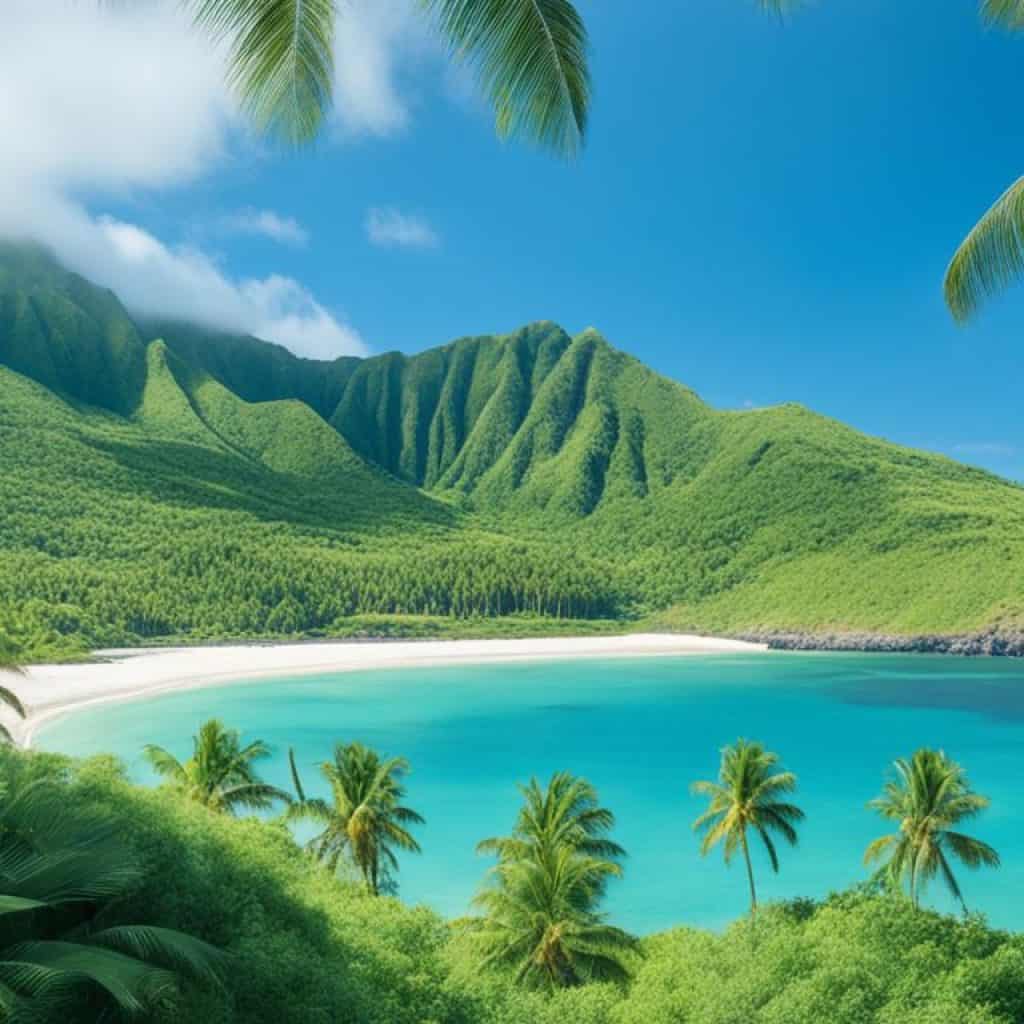
Embrace the Local Culture and Cuisine
One of the highlights of any trip to the Philippines is experiencing the vibrant and diverse local culture. Try traditional Filipino dishes like adobo, sinigang, and halo-halo to indulge in the country’s rich culinary heritage. Don’t be afraid to try street food from local vendors, as it often provides an authentic taste of Filipino cuisine.
Engage in Responsible Tourism Practices
As a responsible traveler, it’s essential to respect and preserve the natural and cultural heritage of the places you visit. Minimize your environmental impact by disposing of waste properly, avoiding single-use plastics, and participating in eco-friendly activities. Support local businesses and artisans by purchasing souvenirs directly from them, contributing to the local economy.
“The Philippines is a hidden gem waiting to be explored. With its pristine beaches, rich culture, and warm hospitality, it’s a destination that never fails to leave a lasting impression.”
By following these recommendations, you can ensure a memorable vacation in the Philippines. Immerse yourself in the beauty of Filipino travel destinations, embrace the local culture, and practice responsible tourism. Let the Philippines captivate your heart and create memories that will last a lifetime.
Conclusion
In conclusion, Boracay may not be a city, but it is undoubtedly an enchanting destination in the Philippines. Boasting breathtaking beaches and a vibrant atmosphere, Boracay attracts countless visitors who are captivated by its natural beauty and lively entertainment options.
The Philippine government’s rehabilitation efforts have been instrumental in addressing the environmental concerns and managing the influx of tourists to the island. By promoting sustainable tourism practices, Boracay is striving to strike a balance between preserving its natural resources and ensuring a memorable experience for visitors.
Whether you choose to visit Boracay or explore other enticing destinations within the Philippines, immersing yourself in the local culture and embracing responsible tourism practices is essential. By doing so, you not only contribute to the preservation of these remarkable places but also create lasting memories of your Filipino vacation.
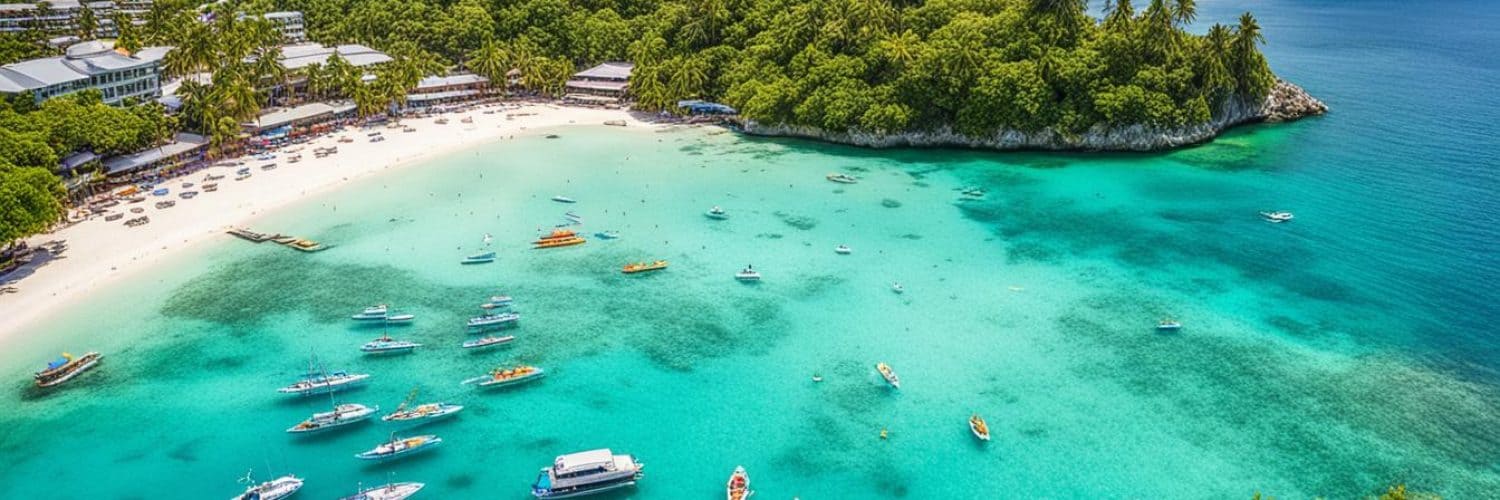
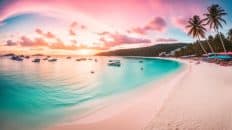
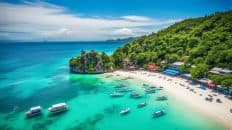
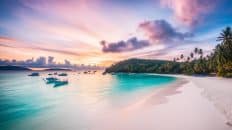














Add comment